|
|
| Sei in: Cinema e Medioevo ® Indice alfabetico dei film |
|
|
a |
 |
 |
 |
|||||
|
Il cinema indiano: non solo Hollywood - Il feudalesimo asiatico - L'altro Medioevo: archetipi e atmosfere |
|||||||||
Elippathayam
1981, regia di Adoor Gopalakrishnan
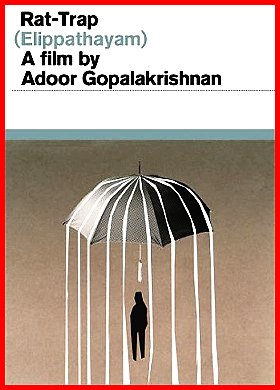
Scheda: Nazione: India - Produzione: General Pictures - Distribuzione: Second Run - Soggetto: Adoor Gopalakrishnan - Sceneggiatura: Adoor Gopalakrishnan - Fotografia: Ravi Varma - Montaggio: M. Mani - Art Direction: Sivan - Costumi: Ganeshan - Musiche: M. B. Srinivasan - Formato: Color, linguaggio Malayalam - Durata: 121'.
Cast: Karamana Sarada, Jalaja, Rajam K. Nair, Prakash, Soman, John Samuel, B. K. Nair, Joycee, Thampi, Sarada.
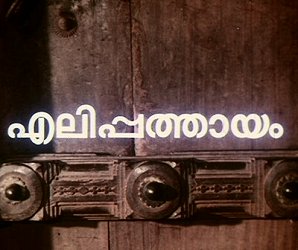
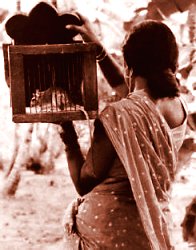
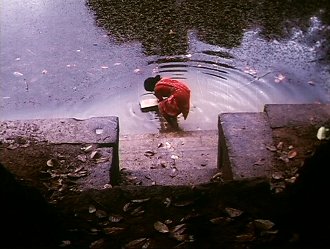
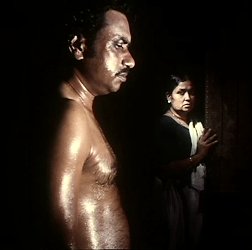
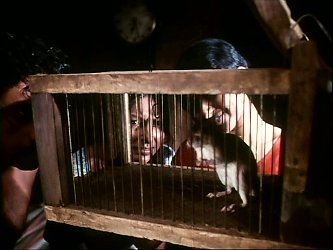

![]() Trama e commenti:
cinema.ilsole24ore.com -
photocinema.it
-
triciclo.forumcommunity.net: «Insieme a Ray, un altro grande regista bengalese,
Ritwik Kumar Ghatak, esordì negli anni Cinquanta raggiungendo la piena maturità
nel decennio successivo (anni Sessanta) con opere polemiche, intense e violente
[...], in cui il destino d’intellettuale dell’autore s’intreccia
indissolubilmente con quello di un popolo intero, diviso tra I. e Pakistan. Alla
base del moderno cinema indiano, Ghatak divenne un punto di riferimento, umano e
politico oltre che artistico, della nouvelle vague che nacque all’inizio degli
anni Settanta. Presso il Film Institute di Puna furono suoi allievi Adoor
Gopalakrishnan (Swayamvaram, 1972, La propria scelta; Kodiyettam,
1977, L’ascesa; Elippathayam, 1981, Trappola per topi) ...».
Trama e commenti:
cinema.ilsole24ore.com -
photocinema.it
-
triciclo.forumcommunity.net: «Insieme a Ray, un altro grande regista bengalese,
Ritwik Kumar Ghatak, esordì negli anni Cinquanta raggiungendo la piena maturità
nel decennio successivo (anni Sessanta) con opere polemiche, intense e violente
[...], in cui il destino d’intellettuale dell’autore s’intreccia
indissolubilmente con quello di un popolo intero, diviso tra I. e Pakistan. Alla
base del moderno cinema indiano, Ghatak divenne un punto di riferimento, umano e
politico oltre che artistico, della nouvelle vague che nacque all’inizio degli
anni Settanta. Presso il Film Institute di Puna furono suoi allievi Adoor
Gopalakrishnan (Swayamvaram, 1972, La propria scelta; Kodiyettam,
1977, L’ascesa; Elippathayam, 1981, Trappola per topi) ...».
![]() Plot Summary, Synopsis, Review: IMDb -
allmovie.com
-
dearcinema.com -
cinemaofmalayalam.net
-
filmreference.com
-
film.com
-
dvdbeaver.com
-
homecinema.thedigitalfix.co.uk
-
molodezhnaja.ch
-
en.wikipedia.or:
«This film documents the feudal life in Kerala at its twilight. The
protagonist is trapped within himself and is unable to comprehend the changes
taking place around him. The film won the British Film Institute award for Most
Original and Imaginative film shown at the National Film Theatre in 1982. The
film was shown at a number of film festivals around the world, including the
1982 Cannes Film Festival. The film revolves around a middle-aged man Unni and
his three sisters; and their struggle to let go of Kerala's feudal system of
life. His elder sister fights for her share of the property, whilst his obedient
younger sister works for Unni like a slave. Eventually, succumbing to the
adverse conditions surrounding him, he withdraws like a rat into a hole. The Rat
Trap acts as a metaphor to understand how the women are placed within the feudal
system of Kerala. Gopalakrishnan says in his interview that the movie was
inspired by the feudal characteristics of his own family. Silence is a huge
trope in the move, with large swathes of silence in dialogue, the way the camera
lingers on the characters, follows them through the scene, almost unbearably
patient. The sister Rajamma is destroyed by the silence of her brother, who does
not support her when she wants to get married, keeps silent when she is ailing
and dying. The patriarchal figure of the "little master" is completely incapable
of facing any threat to his position, he cannot take care of himself without the
women, cannot face the taunts and the threats of his extended family and the
villagers. He needs to be propped up his sisters who cook for him, clean for him,
while he oils himself when he is even incapable of negotiating the outer world
which is changing the form of patriarchy- from feudal to nationalist. The
Rat Trap is a metaphor to show how the women are trapped within the system-
how they are locked into place. ...».
Plot Summary, Synopsis, Review: IMDb -
allmovie.com
-
dearcinema.com -
cinemaofmalayalam.net
-
filmreference.com
-
film.com
-
dvdbeaver.com
-
homecinema.thedigitalfix.co.uk
-
molodezhnaja.ch
-
en.wikipedia.or:
«This film documents the feudal life in Kerala at its twilight. The
protagonist is trapped within himself and is unable to comprehend the changes
taking place around him. The film won the British Film Institute award for Most
Original and Imaginative film shown at the National Film Theatre in 1982. The
film was shown at a number of film festivals around the world, including the
1982 Cannes Film Festival. The film revolves around a middle-aged man Unni and
his three sisters; and their struggle to let go of Kerala's feudal system of
life. His elder sister fights for her share of the property, whilst his obedient
younger sister works for Unni like a slave. Eventually, succumbing to the
adverse conditions surrounding him, he withdraws like a rat into a hole. The Rat
Trap acts as a metaphor to understand how the women are placed within the feudal
system of Kerala. Gopalakrishnan says in his interview that the movie was
inspired by the feudal characteristics of his own family. Silence is a huge
trope in the move, with large swathes of silence in dialogue, the way the camera
lingers on the characters, follows them through the scene, almost unbearably
patient. The sister Rajamma is destroyed by the silence of her brother, who does
not support her when she wants to get married, keeps silent when she is ailing
and dying. The patriarchal figure of the "little master" is completely incapable
of facing any threat to his position, he cannot take care of himself without the
women, cannot face the taunts and the threats of his extended family and the
villagers. He needs to be propped up his sisters who cook for him, clean for him,
while he oils himself when he is even incapable of negotiating the outer world
which is changing the form of patriarchy- from feudal to nationalist. The
Rat Trap is a metaphor to show how the women are trapped within the system-
how they are locked into place. ...».
![]() Approfondimenti: Movie
Review
Approfondimenti: Movie
Review
Conosciuto anche con i titoli: The Rat Trap; Rat-trap.